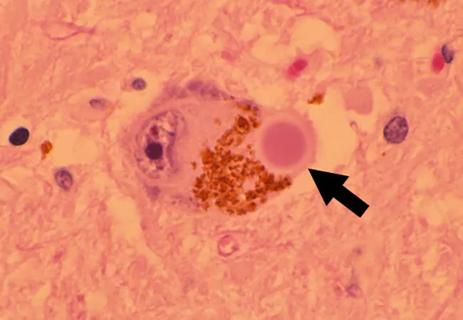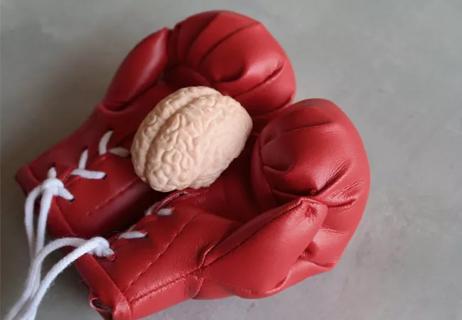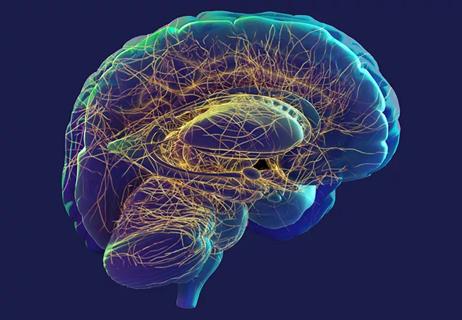Neuropsychological, serum and MRI measures improve over time relative to active fighters

Professional fighters appear to experience recovery in cognitive function, biochemical markers and damaged brain structures following cessation of repetitive head impacts (RHIs), suggests a new study of fighters who transitioned to inactive fighting status. Findings of the study, led by researchers with the Cleveland Clinic Lou Ruvo Center for Brain Health and published online in Neurology, may ultimately help identify potential predictors of which fighters are at greatest risk of long-term neurological conditions related to RHI.
Cleveland Clinic is a non-profit academic medical center. Advertising on our site helps support our mission. We do not endorse non-Cleveland Clinic products or services. Policy
RHI is a major risk factor for long-term neurological conditions and is associated with cognitive changes in professional fighters. Whether those cognitive changes will progress, remain stable or improve once a young fighter is no longer exposed to RHIs has been unclear.
The study authors sought to explore that clinical trajectory in a well-characterized cohort of fighters. “Our hypothesis was that following a transition to inactive status, brain regional measures and cognitive function in fighters would stabilize,” says the study’s corresponding author, Aaron Ritter, MD, a behavioral neurologist with the Lou Ruvo Center for Brain Health. “Our results suggest that neurological functioning can actually improve once exposures to RHI cease. This is evidence of brain resiliency in action.”
The findings may have direct implications for other populations exposed to RHI, such as athletes in other contact sports and military veterans with multiple past exposures.
Dr. Ritter and colleagues identified 90 male professional fighters (boxers, mixed martial artists and martial artists) from the Professional Fighters Brain Health Study, an ongoing longitudinal investigation conducted by the Lou Ruvo Center for Brian Health. None of the participants had any current or prior psychiatric or neurological disorders.
Participants’ fighting activity/inactivity was defined in terms of two time points. Time point 1 (TP1) was at the beginning of the study, when all participants were considered active fighters by dint of having competed in a professional fight within the prior year. At time point 2 (TP2), half the participants (n = 45) were considered inactive, having not competed or sparred in the prior two years and not intending to return to competition, while the other half (n = 45) were still active, having had at least one professional fight in the prior year. The groups were matched for age (mean of 31 years), education, race and number of fights at the beginning of the study.
The primary endpoint was longitudinal change in cognitive functioning and brain structures in participants. At TP1 and TP2, all fighters underwent cognitive testing (for verbal memory, processing speed, psychomotor speed and reaction time) and 3T MRI focused primarily on cortical thickness. Half the fighters also underwent blood sampling for characterization of plasma neurofilament light (NfL) levels at both time points.
A linear mixed effect model was used to investigate potential differences between the groups in longitudinal changes for each neuropsychological score, NfL levels and MRI-derived brain regional measures.
Results showed significant differences in longitudinal trajectories between active and inactive fighters. The inactive group had longitudinally improved cognitive functioning and decreased NfL levels. The active group, in contrast, had continuous declines in cognitive performance and increases in NfL levels.
“Participants who stopped fighting had improvements in verbal memory, processing speed and psychomotor speed, whereas the active fighters had declines in verbal memory and psychomotor speed and stable performance in processing speed,” Dr. Ritter observes.
The NfL results were consistent with previous findings in inactive fighters and with the researchers’ hypothesis that recovery of cognitive function following discontinuation of RHI exposure would be associated with decreases in serum NfL concentrations.
The NfL finding, according to Dr. Ritter, suggests that axonal remodeling can potentially occur once exposure to RHI stops. He cautions, however, that because not every fighter underwent venipuncture at every time point, the results require further inspection in the full sample.
The MRI findings also showed consistent diverging trajectories between the groups in 54 of 68 cortical thickness regions. Thickness measures were stable, at a group level, in the inactive fighters, whereas subtle declines over time were seen in the active fighters. The most prominent differences in structure were seen in the trajectories of cortical thickness measures for the frontal areas and in volumetric measures of the middle frontal gyrus and thalamus.
While the results do not yet have direct clinical implications, they could lead to additional research. Examples suggested by the authors include explorations of the following:
“Our study serves as a starting point for these important clinical issues,” Dr. Ritter concludes. “Additional research is needed to determine whether there is a point at which recovery is less likely or to identify characteristics that indicate greater risk.”

Recognizing this association aids risk assessment before starting novel immunotherapies

GFAP elevation may signal increased risk of progressive regional atrophy, cognitive decline

For some older adults, a rural setting in late life may be protective

Criteria-based diagnosis of traumatic encephalopathy syndrome predicts changes in brain volumes and cognition

High plasma ApoA1 and TG/HDL-C ratio predict faster progression

New findings have important implications for clinical trial design

New research explores the role of immune cell and blood-brain barrier changes

Investigative highlights include hormone therapies, biomarkers and early lifestyle interventions